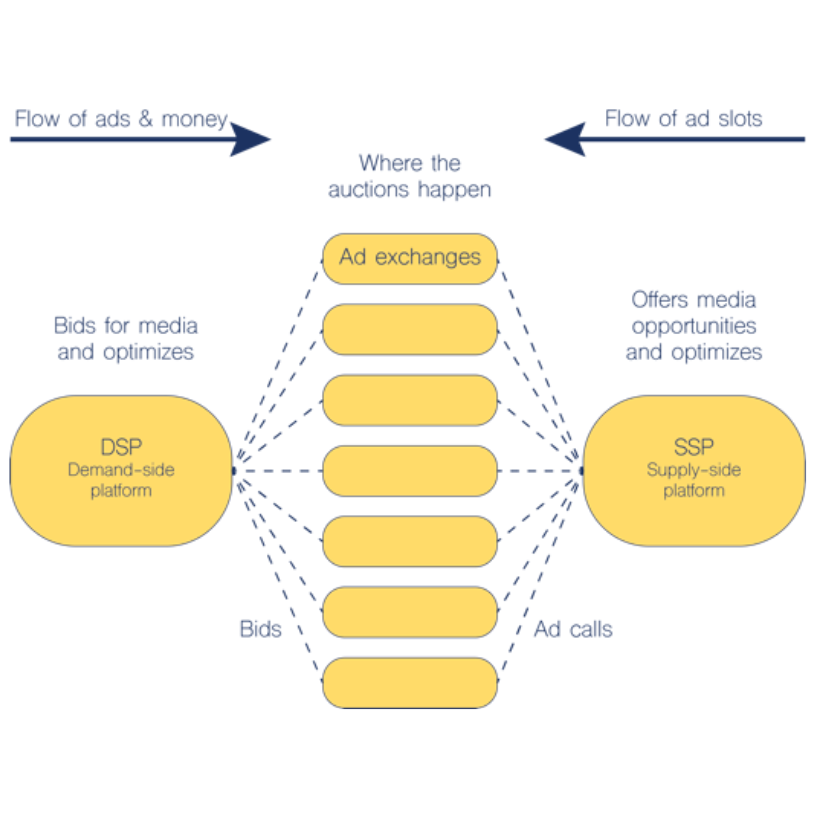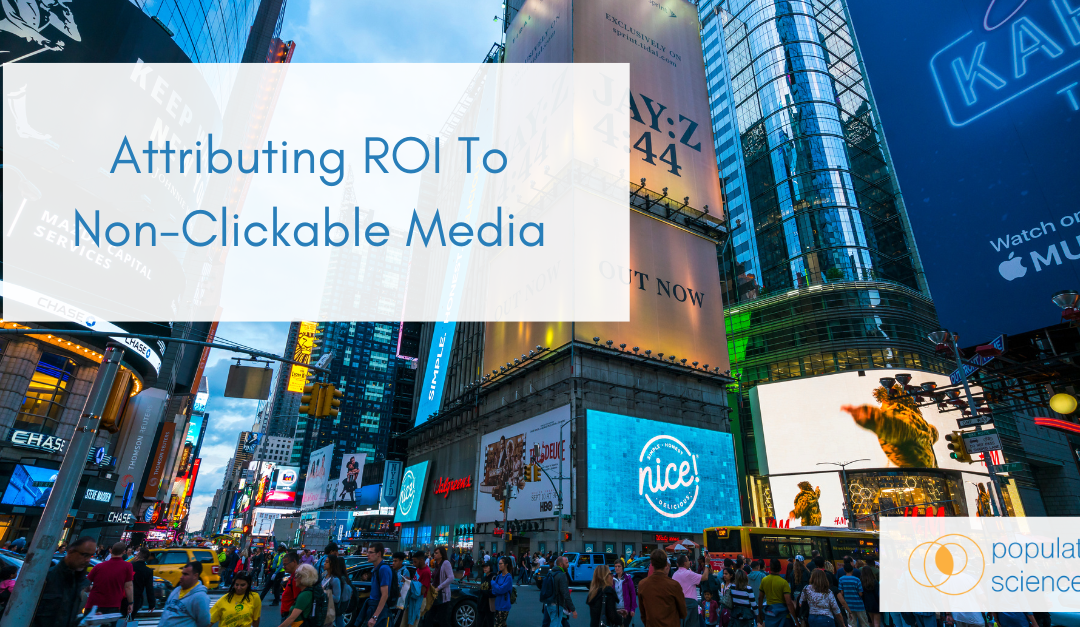
by Denae Luna | Apr 17, 2025 | Digital Marketing, Programmatic
Download the pdf version of the Guide
Overview
When buying digital media most resources go into the inputs of the ad buying process (campaign strategy, creative, and platform). Most agencies and in-house teams do not have enough resources to take on the complex, downstream marketplace analysis and optimization that is required to run a truly efficient campaign.
Media buyers either add verification vendors or hope their platforms optimize their media marketplace for them. Unfortunately, those efforts are woefully inadequate. As validation vendors come up short, signals become more segmented, and third party data provide dubious value media buyers need to take a more active role in controlling the media they are buying.
This guide was created to help the programmatic ecosystem better understand curation/sell side decisioning and how it can help solve some of these challenging issues.
Topics Covered:
- How the open web became a nontransparent, chaotic mess.
- What is curation?
- What is curations role in creating and managing efficient media marketplaces?
- How your organization can get into curation.
The Open Web: Infinite Chaos
The open web was supposed to democratize access to media. It actually made digital media buying more complex creating massive inefficiencies along the way.
Key Issues With The Open Web:
- Too much inventory and too little bandwidth to process it all. This leads to largely arbitrary, algorithmic-based decisioning on bidstream traffic.
- Seemingly unlimited intermediaries across the supply chain providing (often) unknown value.
- Lack of bandwidth from buyers to truly analyze the value of the media they buy at scale.
- Lack of quality control when it comes to implementing IAB standards creating confusion.
- Rampant fraud and brand safety issues.
 Why Is The Open Web So Complex?
Why Is The Open Web So Complex?
This visual is a very basic workflow of the programmatic ecosystem. To put it into more perspective lets look at each level of the workflow:
Demand Side Platform (DSP):
There are 100s of DSPs in the market. While the technology is largely the same, access to inventory can vary by platform. For example, if you want to buy Prime Video programmatically it must be done via Amazon. Another thing to consider is some DSPs are stronger in certain channels than others. (i.e. some DSPs focus on CTV, Native, Digital Out of Home, etc).
Challenge: Whether it’s walled garden O&O limited to certain DSPs or exclusive inventory/data partnerships no single DSP can do it all.
Exchanges/ Supply Side Platforms (SSP):
There are 100s of ad exchanges and/or SSPs that facilitate the transaction between ad buyer and ad seller. To make things complicated the same inventory (from a single publisher) can show up via a number of different SSPs (Supply Side Platform) across a number of ad exchanges at different rates.
Challenge: Buyers and DSPs are overwhelmed with traffic and signals. This leads to arbitrary traffic throttling at the DSP level and massive log files for media teams with little bandwidth to analyze.
Enter Curation
The sell side of the open web has largely been a mystery to buyers. A largely non-transparent group of exchanges, SSPs, and other intermediaries sending trillions of signals via billions of bid requests from a seemingly infinite number of publishers. That is until the supply side opened itself up to curation.
 Curation in programmatic advertising refers to the process of selecting inventory and activating data through deal-based transactions. It allows media buyers to create customized inventory packages that align with their unique goals. In short, it takes your media decisioning to the supply side where it sits closer to the inventory and signals you’re bidding on.
Curation in programmatic advertising refers to the process of selecting inventory and activating data through deal-based transactions. It allows media buyers to create customized inventory packages that align with their unique goals. In short, it takes your media decisioning to the supply side where it sits closer to the inventory and signals you’re bidding on.
Now that the buy side and the sell side are linked via open platforms buyers and sellers can more efficiently bundle quality inventory and data to improve outcomes for both sides of the ecosystem. At a high level this helps solve some of the challenges currently plaguing each side of the ecosystem:
- Demand Side – An over-reliance on one size fits none platforms. Curation allows any platform with their unique inventory, data, and other insights to plug and play into any DSP making activation more portable.
- Supply Side – Buyers can now declare to the supply side what kind of traffic they want to see before their DSP bidder gets bombarded (and ultimately throttled) with queries.
Why Organizations Are Investing In Curation
The first wave of programmatic media buying was entirely focused on doing as much as possible within the DSP. With the sell side now open for business critical media decisioning can now be deployed further up the supply chain. This provides a myriad of benefits, including…
- Better Media Quality – By controlling which inventory is included in a curated deal, buyers reduce fraud, viewability issues, and wasted spend.
- Finding Alpha – Unlock value in mid to long tail publisher inventory that often slips through the cracks. Bundling this traffic with an expert curator can provide buyers with scale across valuable, lesser known publisher sources.
- Media Flexibility – Buyers that work across multiple DSPs are no longer forced to replicate their media decisioning across platforms. Deals are plug and play across all DSPs so your can literally take your activation with you.
- Improved Supply Path Transparency – Curation enables buyers to identify which SSPs and publishers perform best, helping eliminate unnecessary intermediaries and provide supply path optimization.
- More Effective Targeting – Combine your current data strategy with seller-defined audiences, contextual relevancy, and better signal efficacy for improved targeting.
- Traffic Shaping – Define the traffic you want your bidder to see; not what a throttling algorithm thinks you want to see.
- Cost Efficiency – Buyers can negotiate preferred rates with publishers or SSPs within curated deals, optimizing CPMs without sacrificing quality.
Starting Your Curation Journey
Brands, agencies, data providers, solution providers, and publishers (basically everyone in the open web ecosystem) is developing a curation strategy. No matter where your organization sits you have unique needs/goals when it comes to curation. Here is a step by step guide to help you on your curation journey.
Step 1: Build Direct Relationships With SSPs/Exchanges
 A lot of buyers still rely heavily on DSP teams to sort out the supply side for them. This is a mistake. As a buyer you have unique needs and goals with your media budget. It is critical that you have a direct relationship with the exchanges and SSPs you are buying media from. Why?
A lot of buyers still rely heavily on DSP teams to sort out the supply side for them. This is a mistake. As a buyer you have unique needs and goals with your media budget. It is critical that you have a direct relationship with the exchanges and SSPs you are buying media from. Why?
You need to know “how the sausage is made.” While you can easily see the domains and apps you’re buying in a log file, do you know how the exchange/SSP is handling publisher vetting, invalid traffic, brand safety, supply path optimization, viewability, etc?
Do you know if they are ID bridging or doing anything else to enhance the bidstream data from publishers to make it more enticing to buyers? While traffic is traffic, how it’s onboarded, audited for quality, and ultimately passed on to the buy side can vary.
Another important thing to understand is their plans for the short, medium, and long term. SSPs are finally having their moment in adtech and curation is still very nascent. Everyone is rushing to get into curation and SSPs are rapidly sorting out their competitive advantages. It is vital that you understand that their product roadmap aligns with your needs.
Step 2: Define Your Curation Strategy
 Now that you have an understanding of how SSPs and exchanges operate you need to determine which platform(s) best align with your needs. Until now, all of your programmatic decisioning (at least what you can control) has been happening within the DSP environment.
Now that you have an understanding of how SSPs and exchanges operate you need to determine which platform(s) best align with your needs. Until now, all of your programmatic decisioning (at least what you can control) has been happening within the DSP environment.
Deciding to move some or all of your activation strategy to new platforms is a significant change to buyer behavior that needs to be carefully planned and executed. Here are a few things you need to consider:
- How much do you plan to curate? It will be critical to understand how much of your programmatic buy will benefit from curation versus leveraging ever growing direct deal opportunities with premium publishers in the DSP.
- What are your priorities for curation? (e.g., brand safety, efficiency, data activation, premium inventory access).
- What types of inventory do you want to include? (e.g., video, CTV, high-quality display).
- What type(s) of data do you plan to activate?
- Do you have the resources to be “hands on keyboard” or do you need help from a 3rd party?
Every curation platform will have similar functionality, but they all have their own unique niches. It is vital that your curation partner(s) are aligned with your long term goals and have the capacity to meet your unique needs.
Step 3: Activate & Optimize

Now that you have chosen your partner(s) in curation here are some tips to make sure you maximize the newest layer in your in your horizontally integrated, full stack media setup:
- All or Nothing – You cannot split decisioning between the demand side and a curated deal. There are too many interoperability issues that arise. If you activate a curated PMP, all of your decisioning layer needs to be there so make sure your campaign/line item doesn’t have additional targeting parameters on the DSP side.
- Campaign Optimization – Not only has your decisioning moved up stream, your post buy analytics can be shared to further optimize deals. PMPs are no longer a “set it and forget it” proposition. You can consistently work to make them better!
- Curator Collaboration – 2025 will be the year for curators to be able to share data within data marketplaces. Don’t be afraid to engage with other curators that can pass unique data sets, inventory, etc. to you that can further augment the efficiency and effectiveness of your PMPs!
Final Thoughts
Curation is transforming programmatic advertising by allowing buyers to take control of their media supply and improve ad quality. By working with SSPs to curate inventory, your organization can gain greater transparency, improve efficiency, and ultimately drive better campaign outcomes.
If you’re curious about curation, now is the time to explore how it can fit into your media strategy. Whether you’re looking to reduce waste, enhance targeting, or improve brand safety, SSP-enabled curation is a tool everyone in the ecosystem needs in their programmatic toolkit.
Population Science can help you assess your goals and resources available to implement a curation strategy. Our insights into the various curation platforms and service providers will help you make the best decision on who to partner with. No matter where you are in your curation journey we are here to be a resource!

by Denae Luna | Oct 30, 2023 | Digital Marketing, Programmatic
The bidstream, also known as bid requests or bid opportunities, is a fundamental component of programmatic advertising. It refers to the stream of data generated during the real-time bidding (RTB) auction process, where advertisers and their demand-side platforms (DSPs) submit bids to purchase ad impressions on various ad exchanges and supply-side platforms (SSPs).
Here’s how the bidstream works in programmatic advertising:
- Ad Request: When a user visits a website or mobile app with ad inventory available for sale, an ad request is generated. This request is sent to an ad exchange or SSP, which acts as an intermediary between publishers and advertisers.
- Auction Initiation: The ad exchange or SSP collects information about the ad impression, such as the user’s demographics, browsing behavior, the content of the webpage, and more. This information is included in the bid request to help advertisers decide if they want to bid on the impression.
- Bid Requests: The bid request, which is often in the form of a JSON object, is then sent to multiple DSPs. Each DSP receives these bid requests and processes the data within milliseconds to make a bidding decision.
- Bidding Decision: Within the DSP, the bidding algorithm assesses the ad impression’s value based on the available data, the advertiser’s targeting criteria, and the campaign budget. The DSP decides whether to submit a bid and, if so, at what price.
- Bid Submission: If the DSP decides to bid, it generates a bid response. The bid response includes the bid amount and other parameters, such as the creative to be displayed if the bid wins. This response is sent back to the ad exchange or SSP.
- Auction: The ad exchange or SSP collects all the bid responses from participating DSPs. It evaluates these responses and determines the winning bid based on the highest price.
- Ad Delivery: Once the winning bid is determined, the ad impression is delivered to the winning DSP. The winning DSP’s ad is then displayed to the user in real-time.
- User Interaction: The user may or may not interact with the ad. If an interaction occurs (e.g., a click or view), the data is collected and used for reporting and optimization.
The bidstream, therefore, represents the flow of data from the initial ad request to the final ad delivery. It allows advertisers to evaluate and bid on ad impressions in real-time, enabling them to reach their target audience with relevant and timely advertising.
Advertisers and DSPs rely on the bidstream to make quick bidding decisions and optimize their ad campaigns. The bidstream is rich with data, and the analysis of bid requests can help advertisers make more informed choices about which impressions to bid on and at what price, making programmatic advertising a highly data-driven and efficient approach to digital advertising. Any degradation in the bloodstream can cause signal loss. For more on signal loss and how it impacts advertisers click here.

by Denae Luna | Oct 30, 2023 | Digital Marketing, Programmatic
Signal loss in programmatic advertising refers to the loss or degradation of data and information as it passes through various components of the programmatic advertising ecosystem. This loss can occur at multiple stages within the advertising process, from data collection to ad delivery.
Signal loss can have a significant impact on the efficiency and effectiveness of programmatic campaigns. Here are some key aspects of signal loss in programmatic:
Cookie Restrictions: Privacy regulations and browser restrictions have led to signal loss by limiting the availability and accuracy of cookies. This has made it challenging to track users and target them effectively.
Ad Fraud: Signal loss can be exacerbated by ad fraud, where fake or invalid data can be passed in the bidstream and impressions dilute the quality of data used in programmatic advertising. This makes it harder to distinguish genuine user behavior from fraudulent activity.
Data Transfer: Data transfer between different systems and platforms can result in signal loss if not handled properly. Data may be lost or altered during the transfer process. This can include user data, behavioral data, contextual data, IP address, and more.
Latency: Latency in the bidding and ad delivery process can cause signal loss. Delays in data transmission and decision-making can impact the relevance and timeliness of ad targeting. Bid auctions take place in milliseconds so it doesn’t take much of a glitch to create latency in the system.
Invalid Traffic and Impressions: Signal loss can occur when advertisers pay for impressions that are not seen by real users. Invalid traffic, such as non-human traffic (bots), can dilute the value of ad impressions.
Data Aggregation: Aggregating data from multiple sources for audience segmentation and targeting can lead to signal loss if the data is not consolidated accurately or if key details are missed.
Measurement Challenges: Signal loss can make it challenging to accurately measure campaign performance, making it difficult to understand the true impact of programmatic advertising efforts.
Retargeting Issues: Signal loss can hinder retargeting efforts, as tracking users across different devices or platforms may not be as accurate as desired.
Ad Personalization: Signal loss can impact the personalization of ad content. Advertisers may struggle to deliver highly relevant ads to users if data is lost or inaccurate.
Addressing signal loss in programmatic advertising requires implementing data quality controls, using advanced targeting techniques, and being aware of the limitations imposed by privacy regulations and browser changes. Advertisers and marketers often work with data providers, ad tech platforms, and data management solutions to mitigate signal loss and optimize programmatic campaigns. Additionally, continuous monitoring, analysis, and optimization are essential to minimize the impact of signal loss and ensure the success of programmatic advertising efforts. For a deeper dive into DSP buying, check out our Buyer’s Guide: https://populationscience.com/demand-side-platform-buyer-guide/

by Denae Luna | Oct 26, 2023 | Digital Marketing, Programmatic
Attributing Return on Investment (ROI) to Connected TV (CTV), Digital Out of Home (DOOH), and Streaming Audio ads can be challenging but essential for assessing the effectiveness of your advertising campaigns in these channels. To attribute ROI to these ad formats, consider the following strategies (ranked in order of most straightforward to most advanced):
Unique Tracking URLs, QR Codes, or Landing Pages:
Create unique tracking URLs or landing pages for each ad campaign in these channels. This enables you to track website visits, conversions, and other user interactions specific to these campaigns. For visual campaigns like DOOH or CTV you can embed a QR code so people can walk up to the screen, scan, and land on the desired page and track conversions.
Conversion Tracking:
Implement conversion tracking pixels or tags to monitor actions that are relevant to your ROI goals, such as website purchases, form submissions, or app downloads. Ensure that these tags are correctly implemented across all channels.
Custom Promo Codes:
Assign custom promo codes or coupons for each channel or campaign. When customers use these codes during a purchase, it becomes a direct attribution to the specific ad campaign.
Surveys and Feedback:
Collect feedback and conduct surveys to gather information directly from customers. Ask them about their awareness of and response to CTV, DOOH, and streaming audio ads in your campaigns.
Incrementality/Lift Testing:
Conduct A/B testing or incrementality testing by running control groups that are not exposed to your ads and comparing their behavior with those who were exposed. This can help isolate the impact of your campaigns.
Geo-Fencing and Geo-Targeting: 
Leverage geo-fencing and geo-targeting capabilities. For DOOH campaigns you can attribute ROI by measuring foot traffic or visits to physical locations near displays. For CTV and streaming audio you can measure lift by only running one channel in specific geos and compare them to geos not supported by that channel.
Attribution Modeling:
Use attribution models to analyze the customer journey and assign value to each touchpoint along the way. Multi-touch attribution models can help determine the influence of CTV, DOOH, and streaming audio ads in the conversion path.
Cross-Device Tracking:
Implement cross-device tracking to understand how users interact with ads on different devices before making a purchase. This is important because consumers may see an ad on CTV, then switch to a mobile device to complete a transaction.
Advanced Attribution Solutions:
Consider using advanced attribution solutions like marketing mix modeling (MMM) or time-series analysis to determine the impact of CTV, DOOH, and streaming audio in conjunction with other advertising channels.
Keep in mind that accurately attributing ROI to these channels may require a combination of the above methods and tools. It’s essential to develop a robust measurement and attribution strategy to track the effectiveness of your advertising efforts in CTV, DOOH, and streaming audio to make informed decisions and optimize your campaigns.
Are you ready to implement your DSP? Check out this article with a great starting strategy: https://populationscience.com/how-to-implement-a-demand-side-platform-dsp/

by Denae Luna | Oct 26, 2023 | Digital Marketing
In digital marketing, cohorts refer to groups of users or customers who share common characteristics, behaviors, or attributes. Cohorts are used to segment a broader audience into smaller, more homogenous groups. These groups are typically defined based on specific criteria, and the members of a cohort are tracked and analyzed over time. Cohorts are an essential tool in digital marketing for understanding user behavior, improving targeting, and making data-driven decisions.
Here are some factors to consider when discussing the future of digital ad targeting with cohorts:
Privacy Concerns:
With increasing privacy regulations like GDPR and CCPA, as well as browser-level restrictions on tracking, cohorts offer a way to target users while respecting their privacy. This trend toward greater data protection is likely to continue, making cohorts a significant component of digital ad targeting.
Platform Developments:
Major digital platforms, such as Google and Apple, are embracing the concept of cohorts. For example, Google is developing the Federated Learning of Cohorts (FLoC) as part of its Privacy Sandbox initiative. These platforms play a pivotal role in shaping the future of digital advertising.
Data Availability:
The availability and quality of data for creating cohorts can influence their effectiveness. The more data that can be used to create meaningful cohorts, the more valuable this targeting method becomes.
Performance and Relevance:
The success of cohorts in digital advertising will depend on their ability to deliver relevant and effective ads. Advertisers will need to continually optimize their cohort-based strategies to ensure they meet their campaign objectives.
Hybrid Approaches:
It’s likely that future digital ad targeting will involve a combination of cohort-based targeting and other techniques, such as contextual targeting, first-party data, and creative strategies. Advertisers will need to adopt a flexible and adaptable approach to meet their goals.
Regulatory Changes:
Ongoing and future changes in privacy regulations may further influence the role and capabilities of cohorts in ad targeting. Advertisers will need to stay informed and adjust their strategies accordingly.
In summary, cohorts are an important component of the future of digital ad targeting, particularly in the context of privacy-conscious advertising. However, the future is likely to involve a mix of targeting methods, with advertisers adapting to changes in regulations, technology, and user expectations. Cohorts represent a significant step toward a more privacy-focused and effective approach to digital ad targeting, but they are one piece of the broader targeting landscape.
Ready to implement your DSP? Check out our article that has a great startup strategy: https://populationscience.com/how-to-implement-a-demand-side-platform-dsp/

 Why Is The Open Web So Complex?
Why Is The Open Web So Complex? Curation in programmatic advertising refers to the process of selecting inventory and activating data through deal-based transactions. It allows media buyers to create customized inventory packages that align with their unique goals. In short, it takes your media decisioning to the supply side where it sits closer to the inventory and signals you’re bidding on.
Curation in programmatic advertising refers to the process of selecting inventory and activating data through deal-based transactions. It allows media buyers to create customized inventory packages that align with their unique goals. In short, it takes your media decisioning to the supply side where it sits closer to the inventory and signals you’re bidding on. A lot of buyers still rely heavily on DSP teams to sort out the supply side for them. This is a mistake. As a buyer you have unique needs and goals with your media budget. It is critical that you have a direct relationship with the exchanges and SSPs you are buying media from. Why?
A lot of buyers still rely heavily on DSP teams to sort out the supply side for them. This is a mistake. As a buyer you have unique needs and goals with your media budget. It is critical that you have a direct relationship with the exchanges and SSPs you are buying media from. Why? Now that you have an understanding of how SSPs and exchanges operate you need to determine which platform(s) best align with your needs. Until now, all of your programmatic decisioning (at least what you can control) has been happening within the DSP environment.
Now that you have an understanding of how SSPs and exchanges operate you need to determine which platform(s) best align with your needs. Until now, all of your programmatic decisioning (at least what you can control) has been happening within the DSP environment.






